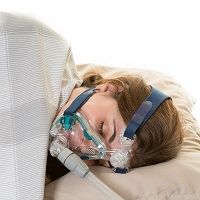Article
Gender Differences Discovered in Emerging OSA Phenotype
Author(s):
Investigators have shared new disparities of characteristics in men and women with differing severities of respiratory arousal threshold.

A retrospective analysis of respiratory arousal threshold (ArTH) in patients with obstructive sleep apnea (OSA) found variations of the emerging phenotype across both genders.
In a presentation at the 2018 Annual CHEST Meeting in San Antonio, TX, Shyam Subramanian, MD, director of Pulmonary Critical Care and Sleep at the Sutter Gould Medical Foundation, explained his team sought to define ArTH in terms of gender influence. Previous clinical history indicates there should be trends.
“Women are from Venus and men are from Mars—that’s the saying, right?” Surbamanian said. “The same thing is true in sleep apnea.”
Though previous studies have indicated that ethnicity is a significant influence on ArTH, no analysis has been capable of differentiating across genders.
In a retrospective review of charts for patients who underwent full night diagnostic polysmnography—with OSA defined as Apnea-Hypopnea Index (AHI) >5—investigators assessed 679 patients and differentiated them as low ArTH or high ArTH. Among overall population, 442 (65%) were male, with another two-thirds (65%) of males making up the low ArTH group.
Subramanian also noted the females to make up the low ArTH group were often older (58±14 vs 54±14) and more obese (BMI 39±8 vs 37±7), but that both genders shared similar metrics on the Epworth Sleepiness Scale (ESS) (12±4 in females vs 11±4 in males). ESS was also similar across both genders in the high ArTH population (10±5 in both), as was age (53±14 vs 55±12). As with low ArTH patients, women with high ArTH were often more obese (37±9 vs 35±6).
In metrics of OSA severity, including total AHI and rapid eye movement (REM) AHI, no gender differences were observed. However, supine AHI was notably lower in males (23±18) than females (29±21; P < .05). In low ArTH patients, overall AHI was slighty higher across both genders, while REM and supine AHI were both significantly higher.
In females, high and low ArTH groups were similar in age (58±12 in high vs 55±12 in low), while low ArTH patients had greater BMI (39±7 vs 37±6), and similar ESS (11±5 vs 10±5). Across all patients, overall AHI was markedly higher in the low ArTH group (49±29 vs 15±10), as were REM AHI (43±30 vs 29±22) and supine AHI (47±35 vs 16±12). Arousal index was higher among the low ArTH group, as well (51±29 vs 33±26).
In a series of conclusions, Subramaniam focused on the findings that females with low ArTH—an already greater population than that of males—are generally older and more obese. They’re also characterized by lower supine AHI, higher REM AHI, and greater hypopnea fraction than their male counterparts.
He noted the gender-to-gender influences on the emerging phenotypic expression are important, as the trait likely has a multifactorial pathophysiology.
“Understanding gender influneces on the low ArTH phenotype may be important in patient identification and triage as we move towards an era of precision medicine in OSA,” investigators concluded. “It may also help understand the pathophysiologic basis of this phenotypic trait.”
The study, "Influence of Gender on Respiratory Arousal Threshold in Patients with Sleep Apnea," was presented at CHEST 2018 on Sunday.
Click here to sign up for more MD Magazine content and updates.
Related Coverage >>>
Women Lung Donors Less Likely to Receive Lung Protective Tidal Volumes
Female CHEST Fellow Applicants on the Rise
Therapy Disruption by Medicare Coverage Could Harm Asthma Control




